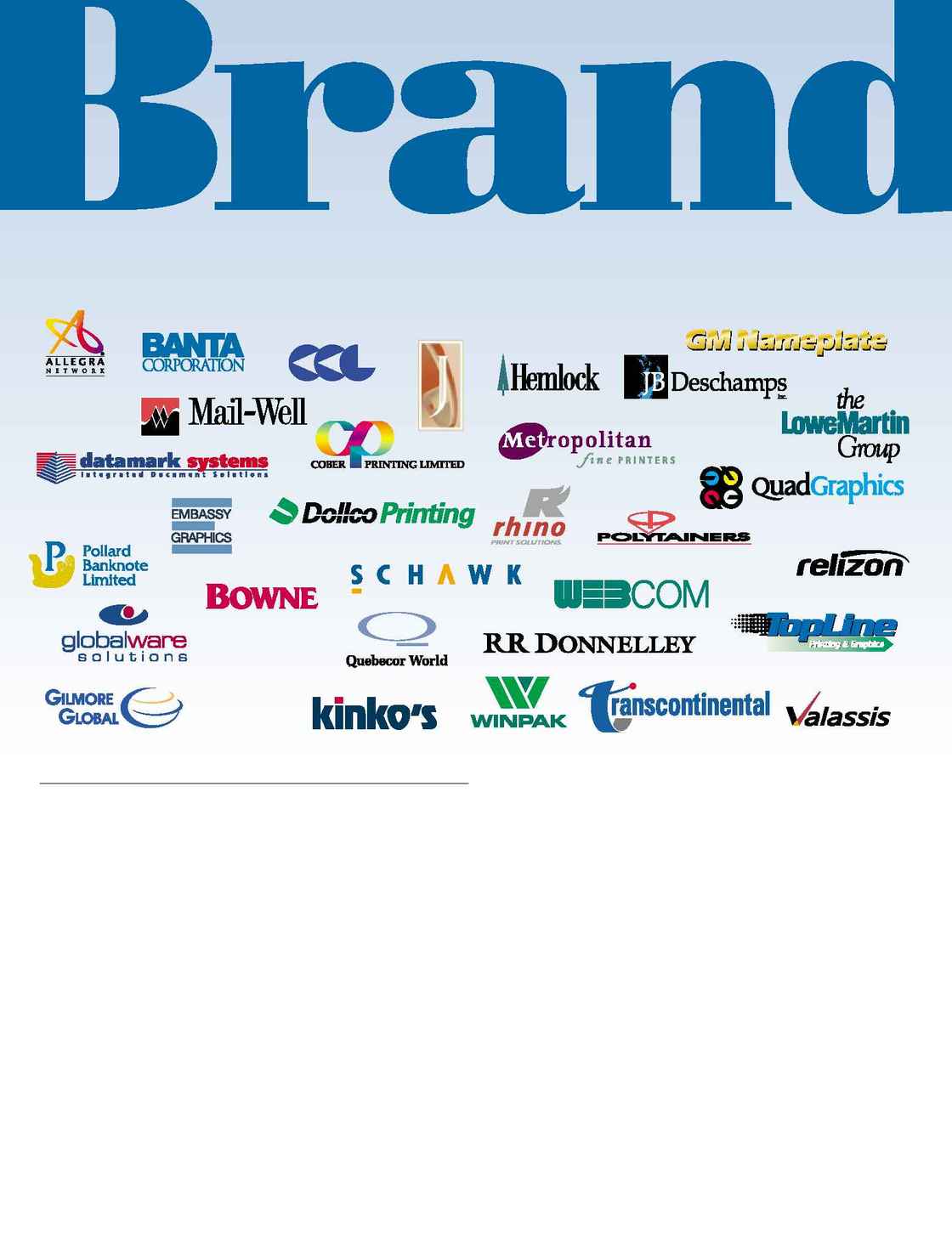
a
graphic designer
, a
print purchaser
and an
ad exec
on perception, reality and graphic communications
Canadian
Bank Note
I
t took some convincing for Schawk to email its
logo over for this story. Position on a world-of-
print map did not appeal to the company, even
though its CEO, David Schawk, has a mandate to
build a global business. One of my original emails,
outlining the article's intent, was returned with a
simple message: Schawk is not a printing company.
By Jon Robinson
The more they resisted, the more I
needed them to participate: If this story
was to be about brand building, I cer-
tainly wanted to include the one com-
pany clearly still part of the industry
objecting to the way in which they
might be portrayed. After several emails
and phone calls, someone from the
company's investor-relations agency
called and outlined some concerns.
Schawk has been trying to shake its
printing label for the last decade, based
"The centre of our target is the pack-
age and the centre of our knowledge is
the package," says Ted Leonhardt, presi-
dent of Anthem Group. "We begin our
work at Anthem with research, strategy
and conceptual development and we
conclude with mechanical art. Then
Schawk picks it up with job engineering
and moves it all the way through to print
management."
This process improves the quality of
the product in a number of ways, which
makes it more successful and, therefore,
adds tremendous value for the client.
Leonhardt says clients are desperate for
Schawk's business model. Wal-Mart, one
of the company's largest clients, has been
using the system for a year and a half.
"Wal-Mart is about systems," he says.
"Wal-Mart is about providing their cus-
tomer a real value on things that are less
money but of equal value. The way you
do that is by being efficient. And systems,
as Edward Deming taught us, are the way
to make things more efficient."
I didn't admit to Leonhardt that I had
no idea who Edward Deming was,
although I assumed he was very knowl-
edge about a principle of some kind. It
was becoming clear to me that Leonhardt
himself is incredibly knowledgeable
about the principles of graphic design.
Days earlier, I interviewed Eve Asbury, a
very tuned-in advertising executive with
Saatchi & Saatchi, and Ron Sibley, a print
buyer (mostly with corporations) for
more than 20 years now. Together these
three leaders formed a perfect cross-sec-
tion to evaluate the branding of print, as
it relates to perception in the marketplace
and to technology in the graphic commu-
nications business.
Before joining Schawk, Leonhardt and
his wife built a regional design business
into a branding machine for clients like
Microsoft, Starbucks, Electronic Arts,
BEA Systems and Charles Schwab. The
company was generating $10 million a
year and growing when the Leonhardts
were bought out by a large design
agency. The agency then wanted Ted in
London, England, to build all of its
properties into one offering.
After 9/11 soured the advertising
industry, Leonhardt decided to take
some time off and hangout in Paris with
his wife and their dogs. "I started looking
at my own industry," he says. "I was look-
ing for what would be the next creative
offer of real value to the businesses of the
world."
He's not sure how Schawk found him,
on how it now needs to be perceived in
the marketplace.
Welcome to Schawk, Ltd.: Every day all
over the world, Schawk helps companies
unleash the power that brands have to grow
and become part of people's lives every-
where. These words greet a visitor at
www.schawk.com. A subsidiary called
Anthem Group is the best example of
David Schawk's vision of using prepress
knowledge to move up the value chain and
work with package design and brand.
